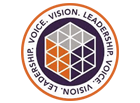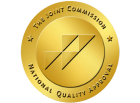Recently there has been a growing number of prescription pill abuse, beyond the opioid crisis— amphetamines are being abused at exorbitant rates. Amphetamines are prescription stimulants, used to treat Attention Deficit Disorder (ADD) and Attention Deficit Hyperactivity Disorder (ADHD), and the sleep disorder Narcolepsy.
Classification
These prescription medications are considered to be a Schedule II controlled substances according to the Drug Enforcement Agency, which means that these substances have a high potential for abuse which can lead to severe psychological or physical dependence. Other drugs in the Schedule II classification include: Dilaudid®, OxyContin®, Percocet®, fentanyl, morphine, opium, codeine, hydrocodone, and meth.
Amphetamines are prescription stimulants. Some examples of amphetamines include: Adderall®, Vyvanse®, Dexedrine®, Metadate®, and the most common amphetamine-variations (methylphenidate)— Ritalin®, Concerta® and Methylin®. People are initially prescribed to these medications because they are used to treat ADD, ADHD, and Narcolepsy. Despite being an effective medication to treat this disorders, amphetamines are extremely addictive and hold a long list of negative side effects.
Amphetamines
Amphetamines are central nervous system stimulant, these medications have a short term effect that allows the person with an attention deficit disorder to focus. Similarly, the stimulant effect on those with narcolepsy allows them to be stimulated and stay awake through out the day. Amphetamines activate receptors in the brain, and increase activity in certain neurotransmitters, most notably norepinephrine and dopamine.
These two neurotransmitters are very important. Norepinephrine gets both the brain and the body ready for action; Dopamine is associated with pleasure, attention, and movement.
Physical Side Effects of Amphetamines
- low or high blood pressure
- Raynaud’s phenomenon— reduced blood flow to the extremities
- erectile dysfunction, especially frequent or persistent erections
- rapid heart rate
- abdominal pain
- loss of appetite, nausea, and weight loss
- acne, rash, hives
- blurred vision
- dry mouth
- teeth grinding
- nosebleed
- profuse sweating
- nasal congestion
- increased likelihood of seizures for susceptible individuals
- nervous tics
- fast, deeper breathing
- difficultly urinating
(Newman).
Psychological Side Effects of Amphetamines
- increased alertness
- increased focus
- apprehension, anxiety
- irritability, restlessness
- mood swings
- insomnia
- changes in libido
- grandiosity, or an exaggerated sense of one’s own importance
- obsessive behaviors
- aggression
- psychosis
(Newman).
Abusing Amphetamines
Abusing amphetamines can lead to a laundry list of undesirable effects, which grow in severity with repeated abuse. Doubling up your dose for just one day, or taking any amount other than what’s prescribed to you, including taking your next dose earlier than you are intended to, is considered overuse.
The undesirable effects that stem from overuse and abuse include:
- psychosis
- delusions
- paranoia
- hostility
- cardiovascular issues, including stroke, heart attack, and heart failure
- reduced cognitive ability
- muscle deterioration
- malnutrition and anorexia
(Newman).
People abuse amphetamines by way of orally taking the pills (which is most common), snorting the pills (crushing them up and inhaling the powder intranasally), or by using the pill intravenously (dissolving the crushed pill into water, and injecting it directly into the bloodstream through a vein).
Each way of abuse is dangerous, and leads to adverse and severe effects. Intranasal use can cause its own set of negative effects on the nasal passage, including: tissue deterioration, respiratory issues, frequent nose bleeds, etc. Intravenous drug abuse also puts users at a much higher risk of contracting infectious diseases through needle-sharing, like HIV/AIDS, Hepatitis C, Hepatitis B, Tetanus, and also are at a risk for developing infections, abscesses, and vascular scarring, among other conditions.
What You Need to Know About Prescription Stimulants
Children put on prescription stimulants have twice the rate of future drug abuse (Foundation for a Drug-Free World). “According to a 2005 study, teens who abuse prescription drugs are twelve times likelier to use heroin, fifteen times likelier to use Ecstasy and twenty times likelier to use cocaine, compared to teens who do not abuse such drugs” which can be substance abuse that grows into addiction in adulthood (Foundation for a Drug-Free World).
Even if you are prescribed to medications like Adderall®, Dexedrine®, Vyvanse®, etc. you could suffer from the negative side effects, including side effects associated with prescription stimulant abuse. Many times, people will receive medications because they are misdiagnosed; similarly, people will continue to receive medications for a disorder they could have grown out of with age, causing them to medicate themselves unnecessarily.
Especially with ADD and ADHD, these disorders are something that are commonly diagnosed in childhood. The diagnoses can change as the child grows into an adult, at which point a doctor would need to re-access the original diagnosis. If you have grown out of ADD or ADHD, you will no longer need your prescription stimulant medication, as it will likely only bring you negative side effects. Continuing to take a medication past its’ need, is considered another form of overuse.
Detoxing from Prescription Stimulants
In addition to abusing prescription stimulants, using a prescription stimulant for years will also require a medical detox to come off of the medication. Like any drug, detoxing under a medical professional is crucial for a safe detoxification.
Even if you have been prescribed a stimulant medication, chances are you have developed a tolerance and/or a dependence. If your doctor has had to increase your prescription dose at any point, that means you developed a tolerance to the medication— so your body required more of the substance to achieve the desired effect. As with any substance, prescription or non-prescription, if you have been using or abusing the substance for a substantial period of time, your body has developed a dependence on that substance. You can develop a physical dependence or psychological dependence. These dependences will cause a variety of withdrawal symptoms once you stop using the substance.
Withdrawal Symptoms
Symptoms of withdrawal occur once prescription stimulants have stopped entering the body of someone who has developed a dependence. Withdrawal symptoms range in severity, from mild to serious symptoms.
Withdrawal symptoms from prescription stimulants include:
- cravings
- dysphoria
- depression
- anxiety
- body aches
- severe mood swings
- fatigue/sleepiness -> insomnia or hypersomnia
- decreased heart rate
- increased appetite
- slowed speech, movement
- jitters
- impaired memory
- chills
- vivid, unpleasant dreams
- dehydration
- dulled senses
- inability to experience pleasure (anhedonia)
- suicidal ideation
- hallucinations
- extreme paranoia
- psychosis
Those with co-occuring disorders like anxiety, depression, and other mental health disorders, are at a higher risk for experiencing the most severe of the prescription stimulant withdrawal symptoms. Generally, symptoms last for anywhere from a few days to a few weeks. Despite this, some of the psychological symptoms can last for a month or months after the last use. Prescription stimulant withdrawal symptoms can include severe depression and thoughts or ideas of suicide, which is why it’s vital to be checked into an inpatient medical detox facility like Royal Life Detox. Stimulant drugs have many severe implications within the detox process, which is why detoxing is best done in a professional setting.
Our Medical Detox
Royal Life Detox is a premier medical detox center, that specializes in treating a range of substance use disorders and alcohol use disorder. Royal Life Detox provides 24/7 direct supervision of guests by medical professionals, to ensure their safety and comfort. Upon arrival to our facilities, each guest will be assessed and evaluated by medical professionals, to determine withdrawal symptoms and identify any co-occuring disorders. Our medical detox center uses medication-assisted detox on a case-by-case basis as well.
Guests will have medical professionals available to them 24/7, to address any needs or concerns at any time. Our goal in medical detox is to effectively, safely, and comfortably detox you from any substance or substances. Royal Life Detox puts our guests first in all respects, your personal needs and safety are of paramount importance. At Royal Life Detox, we also provide intensive therapies to begin your recovery journey. Group therapy is one form of intensive therapy that our guests attend multiple times per day. Guests also are matched with a primary therapist, who they will meet with regularly and through out their time with us. Guests also have a case manager, who will help them with anything from handling legal issues to applying for government assistance. Royal Life Detox is the perfect medical detox facility to help you begin your journey to recovery.
Reach Out
If you or someone you know is struggling with an addiction, please reach out to us at (877)-RECOVERY or (888) 559-5109. Our team of addiction specialists make themselves available to take your call 24 hours a day, 7 days a week. Because We Care.
References:
Newman, Tim. “Amphetamine: Uses, Side Effects, and Contraindications.” Medical News Today, MediLexicon International, 22 Dec. 2017, www.medicalnewstoday.com/articles/221211.php
Foundation for a Drug-Free World “What Is Ritalin? Street Names for Ritalin & ADHD Drugs – Drug-Free World.” Foundation for a Drug-Free World, www.drugfreeworld.org/drugfacts/ritalin.html






